
Hope for a huge, ancient and imperilled fish
First Nations are leading efforts to make sure lake sturgeon can find a home in...
This story has been co-published with The Globe and Mail.
When I moved to Youbou, B.C., on the shores of Cowichan Lake in January, the first neighbour to come and say hello was Bob.
He weighed approximately 800 pounds but had the curiosity of a kitten as he approached the fence moments after we pulled in the driveway. Word of Bob the elk had preceded him in this small Vancouver Island community. We knew who he was right away, thanks to the tag in his left ear. “Hey buddy,” I said as my husband took a video.
Bob was not just any elk. At approximately 15 years old, he was about 100 in wild elk years. He injured his foot so badly a few years back that a B.C. government veterinarian examined him several times. On another occasion, Bob was tranquilized because he had a wire stuck in his antlers. He’d been featured on the local TV station and residents raised funds in an attempt to erect a statue of him in the local park. On the community Facebook page, residents regularly posted photos of Bob. People were quick to comment: “So cute.” “Bob is a sweetheart.” “I love Bob.”
But it didn’t take long to learn the resident Roosevelt elk herd — listed as a species of special concern in B.C. — was a polarizing subject in this former sawmill town. “Everything you love, they eat it,” one of my new neighbours warned. Poachers have been known to shoot and kill elk here, sometimes leaving them whole.
Despite this, we couldn’t help but feel Bob’s greeting was something of a good omen. My husband and I had moved to this end-of-the-road community with hopes of a fresh start after hard times (think: three floods, a stolen car, an attempted break-in, a car accident and several more heartbreaking losses). It was Bob who had drawn our attention to our new home. As we drove around the area last summer, there was Bob, standing beside a “for sale” sign.
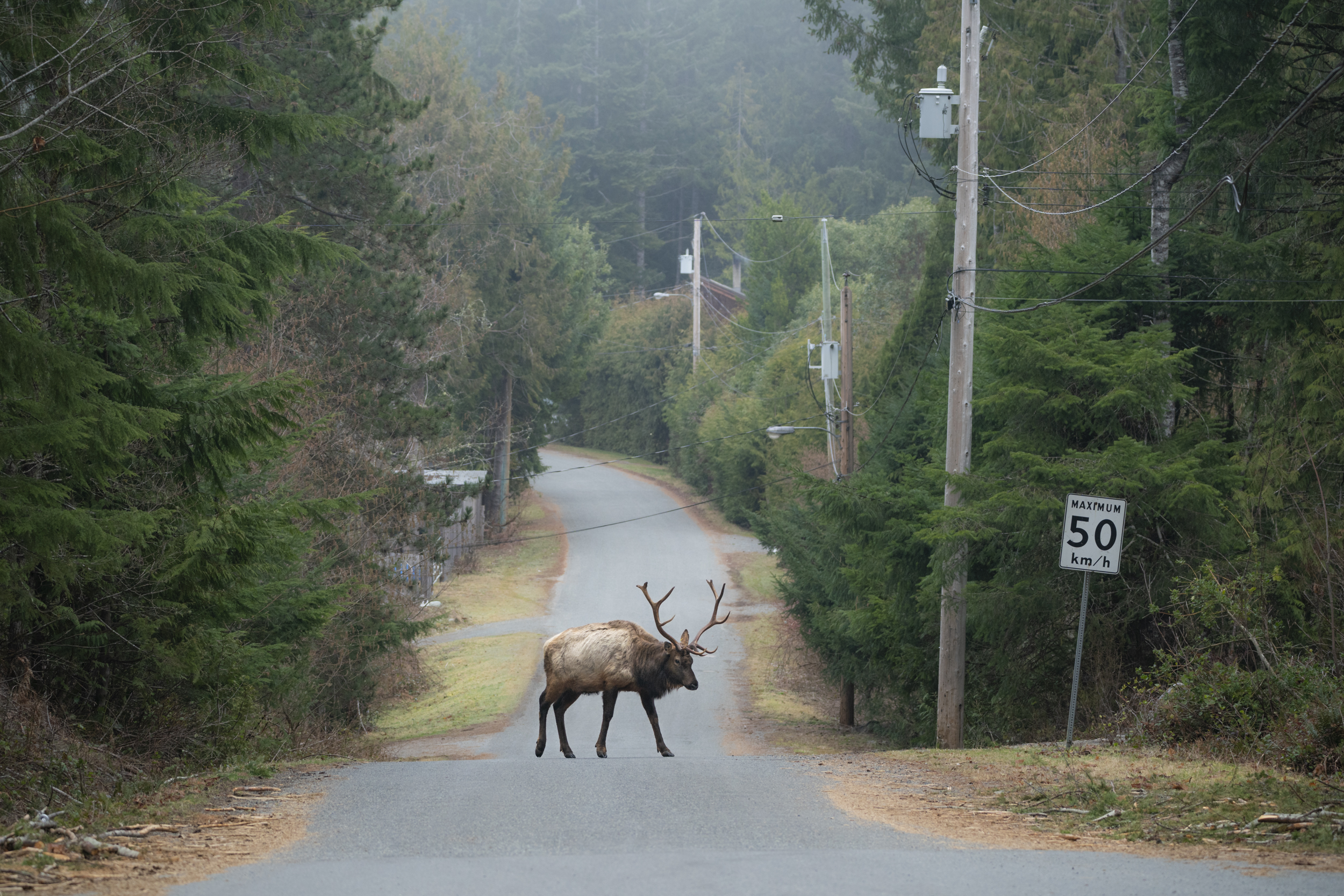
A month after moving in, on Feb. 25, I was enjoying a slow morning reading in bed when my husband came upstairs and broke the news: “I think Bob might have been killed last night.” According to a Facebook post, a large male elk had been hit by a car near our house at 2:45 a.m. Everyone was worried it was Bob. By the afternoon, a photo of the dead elk on the road had been posted on the community Facebook page. Wendy Stokes — who gave Bob his name — confirmed it was him. Amid outcry, the photo was removed.
When Stokes heard an elk had been hit, she got straight into her car wearing pyjamas and drove to the Lake Cowichan RCMP station, looking for answers. On the way, she passed Bob’s blood on the asphalt. Unable to confirm the elk’s identity, next she went looking for his body down a gravel road, in a place where highway crews often dump roadkill. But she couldn’t find Bob.
The questions from the community were immediate: had the driver been drinking or speeding? Was it even possible to hit an elk if you were obeying the speed limit of 50 km/h? Where was his body?
The story unravelled before me like a true-crime mystery, nature edition.
I had my own questions about what had led elk to live here in the first place and why there wasn’t better signage warning drivers about them being on the road. And I wondered how many other elk had died in collisions.
The night after Bob’s death, I lay awake and thought about him on the pavement outside my home, dying. I needed to know Bob’s story and what factors led to his demise. What did this community’s love for this animal tell us about our relationship with the natural world? And what could Bob’s death teach us?
“Roosevelt elk are an iconic, genetically pure species of elk. They’re beautiful animals, they’re big and they’re co-existing across a human-altered landscape,” Leonard Sielecki, CEO of Wildlife Logistics, told me. Sielecki recently retired as the head of wildlife-vehicle collision monitoring and mitigation for the B.C. Ministry of Transportation and Infrastructure, so I called him to talk about Bob.
“There’s something about a Roosevelt elk: their colouring, the way their antlers are set, the way they present themselves, God, it goes right to the core of my heart,” Sielecki said. “They are an animal that people become attached to.”
Roosevelt elk — the largest subspecies of elk — were once abundant throughout much of British Columbia and the Pacific Northwest. But an ever-expanding human population and overhunting led to declines. Roosevelt elk were largely extirpated from B.C.’s south coast in the 1880s; by 1986, scientists estimated there were fewer than 50 remaining there. Conservation efforts, including translocating elk from healthier populations on Vancouver Island to the mainland, enabled the population to rebound.
The population on Vancouver Island also bounced back. Between 1981 and 2024, the Roosevelt elk population here roughly doubled, from 2,700 to an estimate of 5,300 to 6,300, according to the Ministry of Water, Lands and Resource Stewardship. But the vast majority of those elk live on the north end of the island, whereas Bob lived in the south.
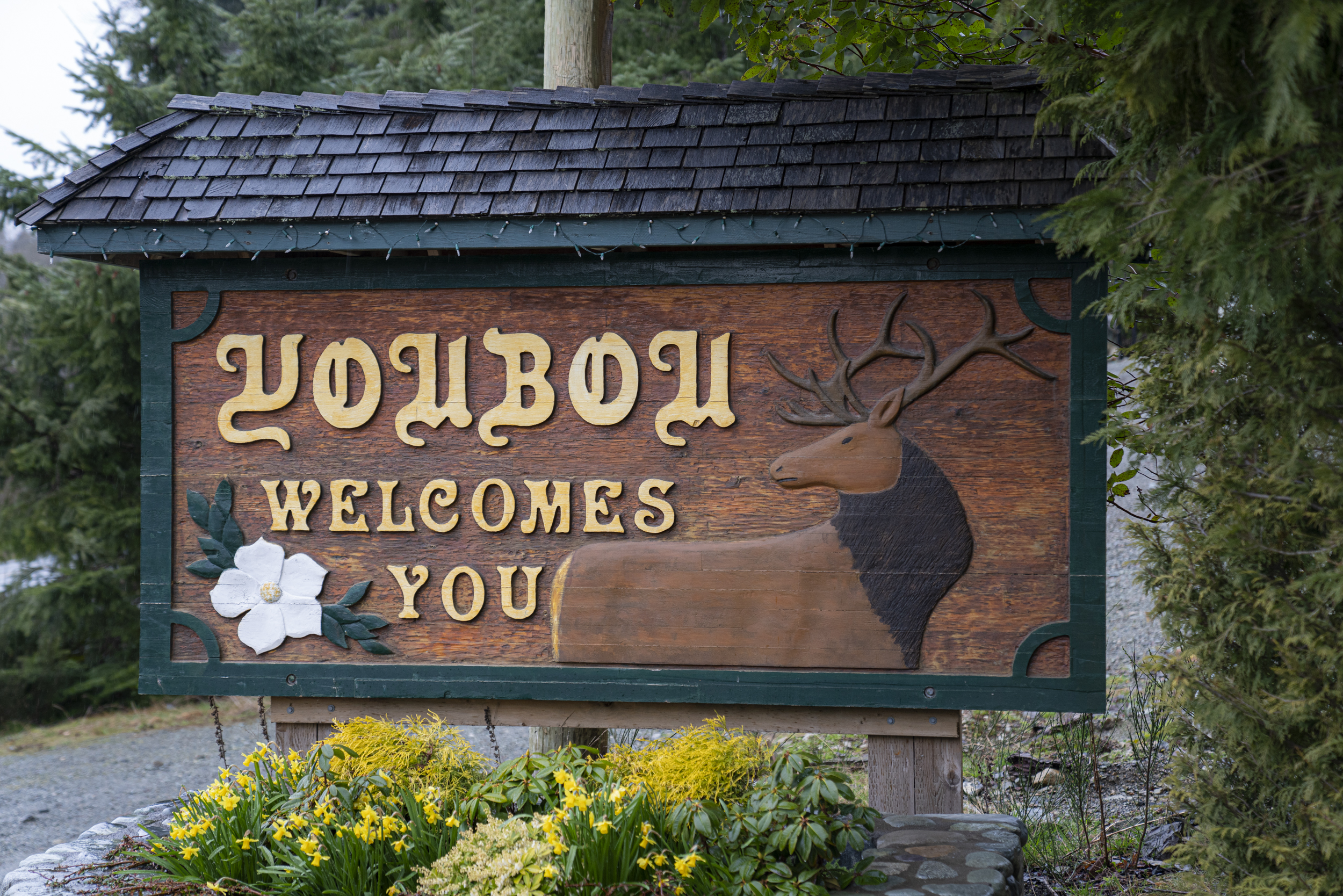
The resurgence of Roosevelt elk is a rare conservation success story, according to Adam Ford, an associate professor of biology at UBC Okanagan, who studies the impact of human activity on the predator-prey relationship.
“Most major wildlife species in British Columbia are declining,” Ford told me. “These are little bright spots in a very dark landscape. Taken as a whole, the whole Roosevelt elk story is a positive. It speaks to the resilience of the species.”
Roosevelt elk graze on a variety of shrubs, grasses, sedges and trees. They tend to live along forest edges, river banks, recently burned forest stands or clearcuts. That makes a place like Youbou, a community built around the logging industry, prime habitat for elk.
According to Ford, a key change that helped Roosevelt elk bounce back was improved forest management — chiefly setting aside blocks of mature forest as “ungulate winter ranges” which act as mini protected areas where elk can find food even when snow covers clearcuts.
In a 2014 management plan for Roosevelt elk, the province stated a goal to remove the animal from the blue list — a list of species “of special concern, vulnerable to extirpation or extinction” — by 2024, while recognizing that has “potential implications for the forestry sector, agriculture and public safety due to the risk of vehicle collisions.”
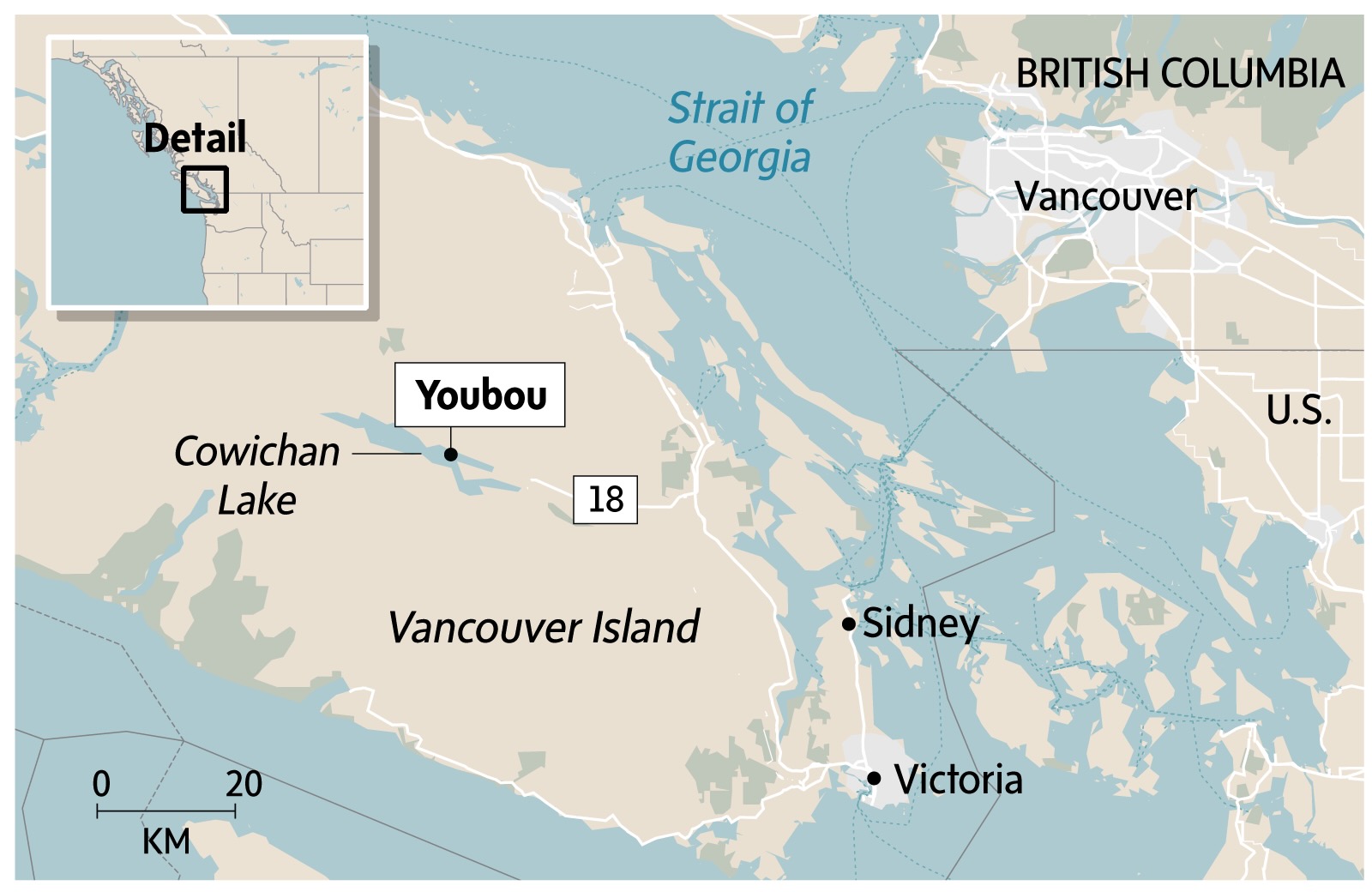
In my quest to learn more about elk, I sent a lot of emails, texts and Facebook messages. I tried to speak with provincial biologists, the local conservation officer, the local director with the Cowichan Valley Regional District and the Ts’uu baa-asatx First Nation, but wasn’t able to get interviews with any of them.
A public affairs officer with B.C.’s Ministry of Water, Land and Resource Stewardship sent me a statement saying the management strategy for Roosevelt elk will be updated in 2025 and their conservation status will be reviewed then, too. Staff update population counts every one to five years, they added, and elk populations have increased in most areas across Vancouver Island.
Human numbers have increased too, with the population of Youbou jumping by 20 per cent between 2016 and 2021, and now sitting at 1,300 people. Residents of Youbou report seeing more elk in town since about 2010.
While elk have lived on Vancouver Island for at least 12,000 years — and continue to be a culturally important species for First Nations — there are several reasons why elk may be seen in Youbou more now than in the past.
Predators like wolves, cougars and bears are less keen on being close to humans, so populated areas can become something of a “human shield” for elk.
“Over time, if their survival in town is really high, because there’s no predators and people are feeding them, it doesn’t really create an advantage to migrate,” Ford said.
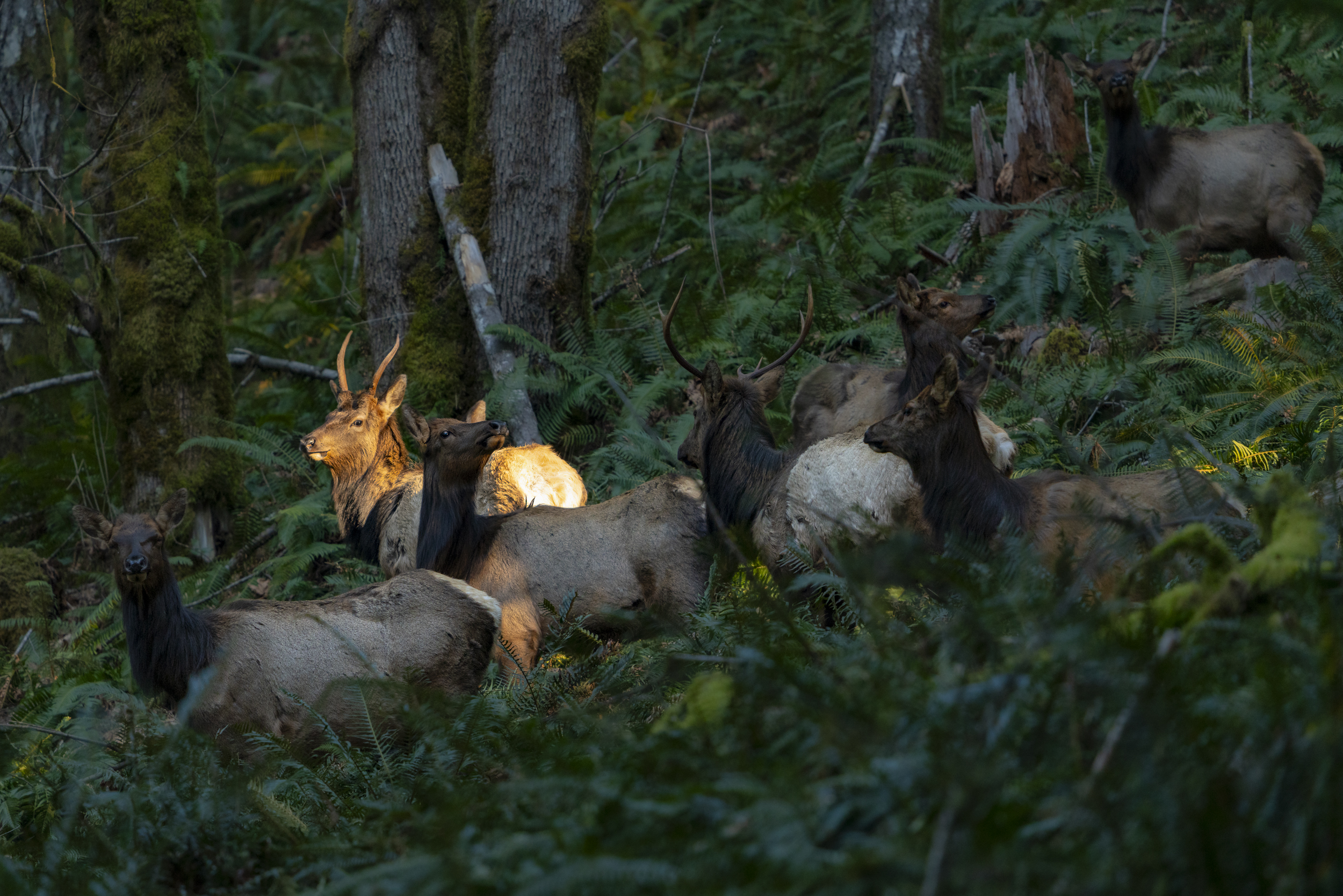
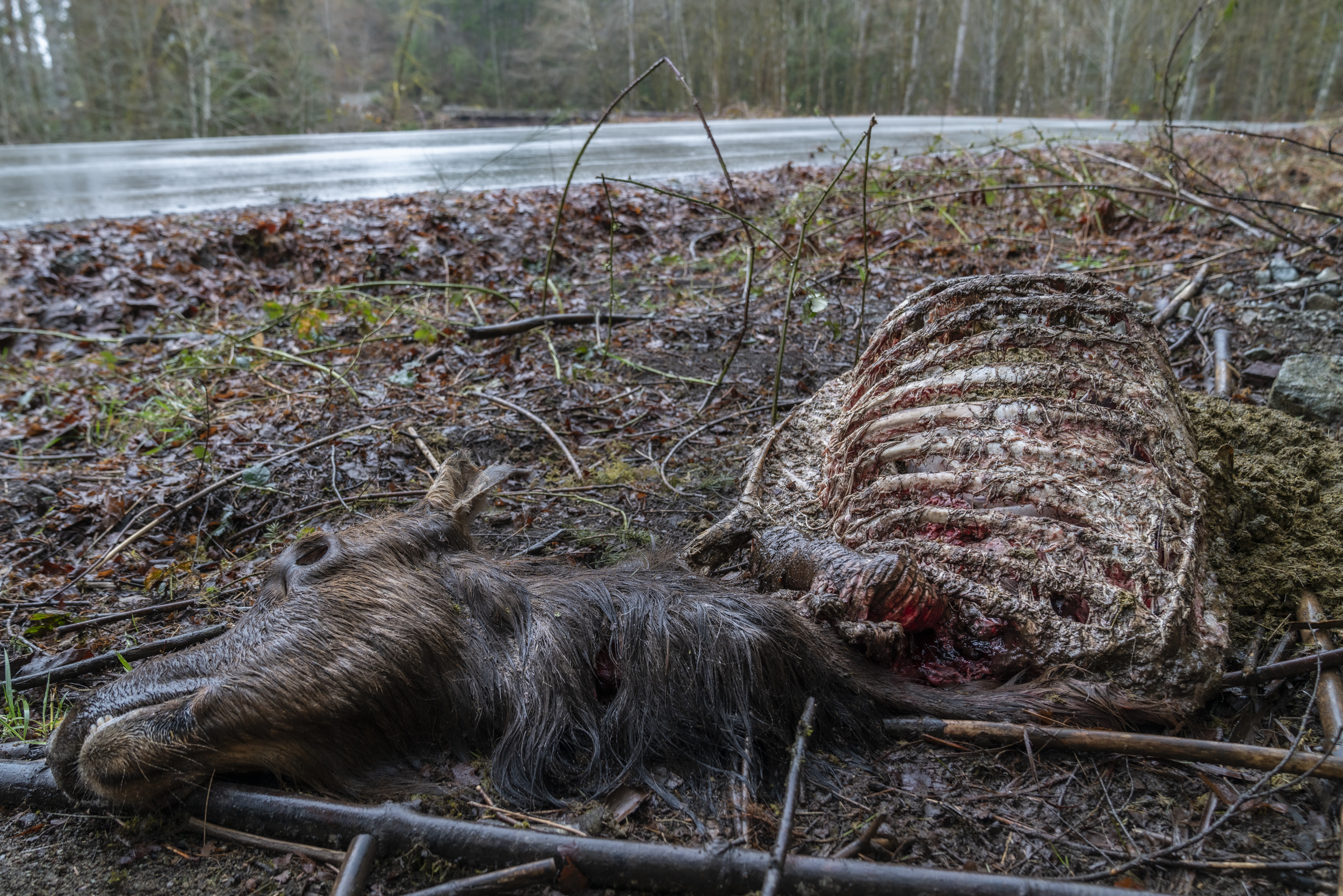
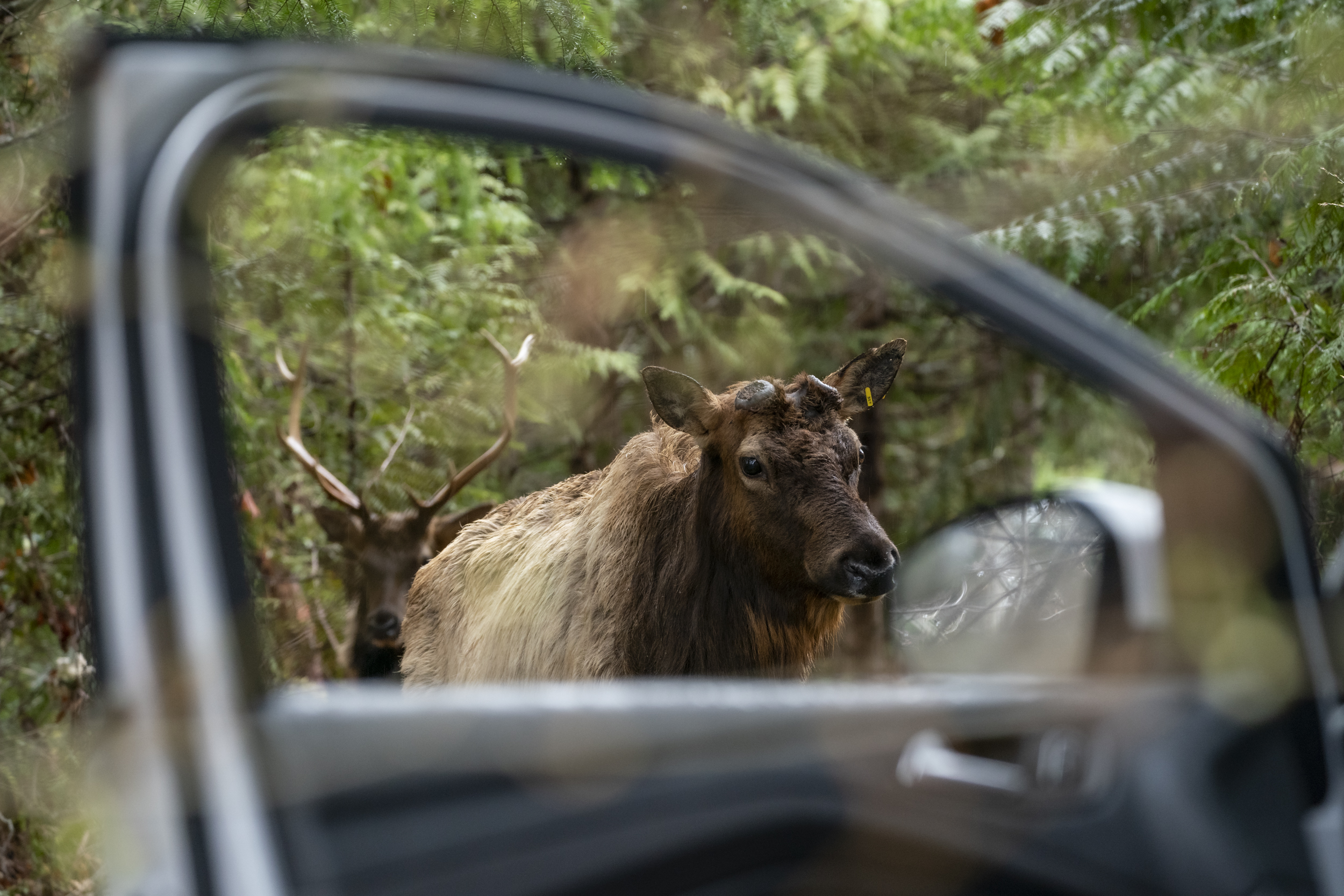
Then there’s the food. The ministry told me that in addition to shelter from predators, “the availability of non-natural food” is a key attractant for elk.
In recent years, Bob lost a lot of weight, and his ribs started to show. That, combined with his foot injury and familiar presence, created a slippery slope. Some residents started feeding Bob.
It’s easy to see how once it began, it became hard to stop. In the first couple of weeks in our new home, Bob was waiting for us nearly every time we stepped outside. The first time we tried to walk to our mailbox, Bob cornered us in our driveway. It wasn’t clear whether he wanted us to pet him, feed him or hand over our phones. Not wanting to further habituate him, my husband snapped his fingers and talked sternly to him. Dejected, Bob walked away. Another time he followed me and a friend to the general store, where he headed for the loading dock. “Bob’s eating the cardboard again,” one of the store clerks yelled to the other.
“Feeding them can be bad for their health,” Ford said. “They get used to kind of a bad diet and their digestion gets set up for that … having respect for their wildness is really important.”
While some people admit to intentionally feeding Bob, there are also more indirect ways humans attract animals. The town of Banff, Alta., for example, has a bylaw restricting all animal attractants, from accessible garbage and recyclables, to fruit trees and gardens. The town also has a fruit tree replacement program that covers the cost of swapping a fruit tree for a native non-fruit bearing tree.
But in Youbou, an unincorporated community within the Cowichan Valley Regional District, the garbage cans don’t have latches and elk can easily knock them over and eat whatever they find inside. And there are no rules about gardens or fruit trees to reduce the attractions for elk and bears alike.
Within days of Bob being hit by a car, tote bags, sweaters and mugs with his image were for sale. News of his death made the front page of the Victoria Times Colonist and the local TV station. Two weeks after Bob died, a memorial service was held for him. Torrential rains fell in the morning, but the sky cleared as about 45 people gathered in Little League Park, just 300 metres from where Bob was killed. Many people wore sweatshirts emblazoned with an image of Bob and the words “Youbou’s legend” on the sleeve. Among the attendees were a local RCMP officer and B.C. conservation officer.
Youbou resident Matt Baird, who co-organized the event, started it off by saying how Bob helped bring him to this off-the-beaten-path community.
“He had a soothing, yet fiercely powerful way about him,” Baird said, adding Bob would often come and visit his yard, eating from the trees. “After I knew that he was comfortable with me, I would go out and sit near him and enjoy his company. Often I talked to him, half expecting him to reply.”
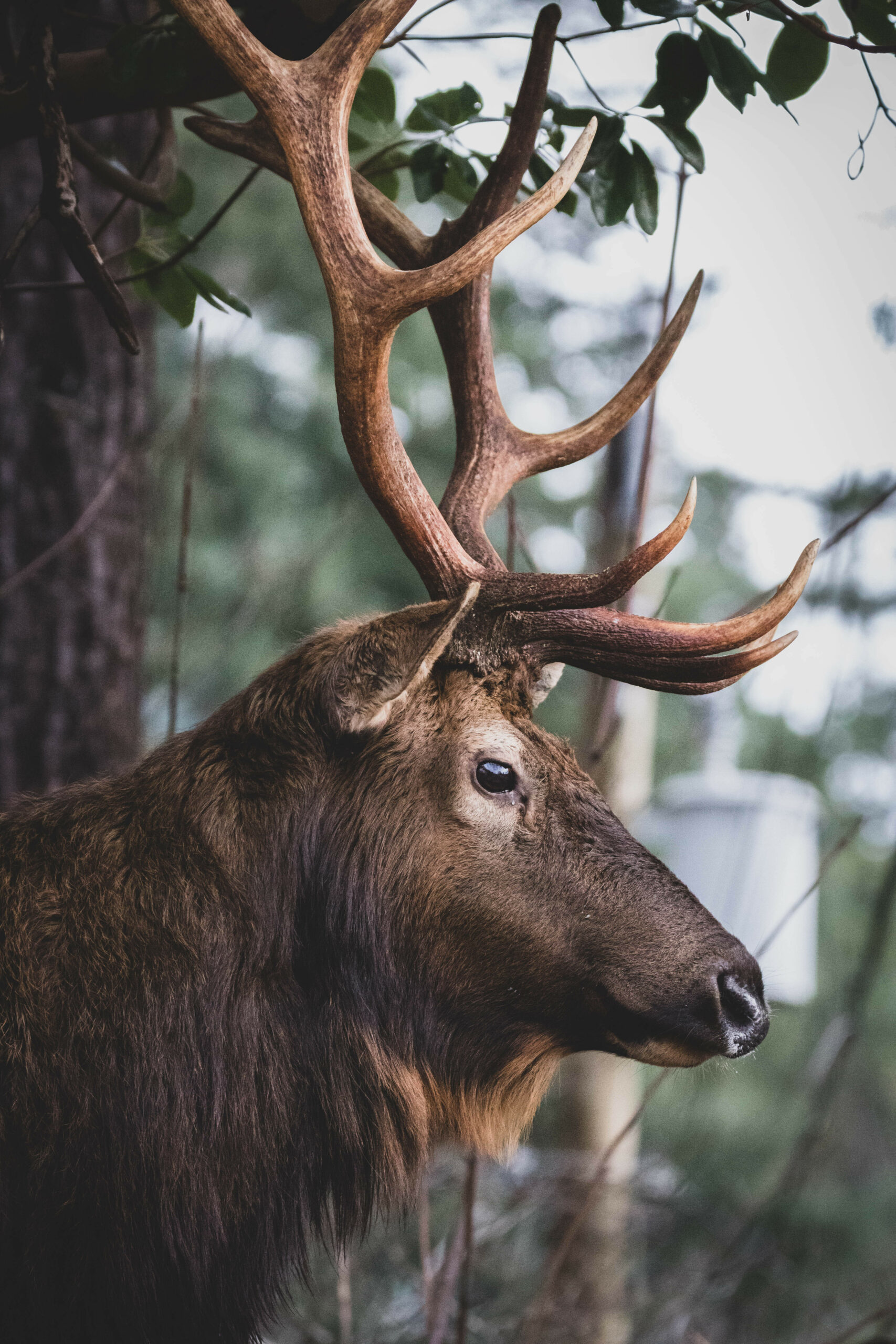
Baird — a carpenter donning steel-toed boots — shared how when he moved to Youbou from Victoria, he struggled with anxiety, was impatient and sped regularly.
“Being in Youbou and being around Bob and the other elk has a very therapeutic effect on you. Sitting outside watching and talking to him helped me and taught me to slow down and enjoy the nature around me,” he said, as many people wiped away tears. “I no longer feel so much anxiety. I’m a much more patient person. I enjoy the silence and the sound of nature. More importantly, I’ve learned to slow down while driving.”
For Sielecki, the former government employee responsible for reducing wildlife-vehicle collisions, “Bob represents a pinnacle in wildlife awareness.”
“He had a persona, he had a presence, he had an identity and he was part of that landscape,” Sielecki said, describing Bob as being like “the elder statesperson for the wildlife in your community.”
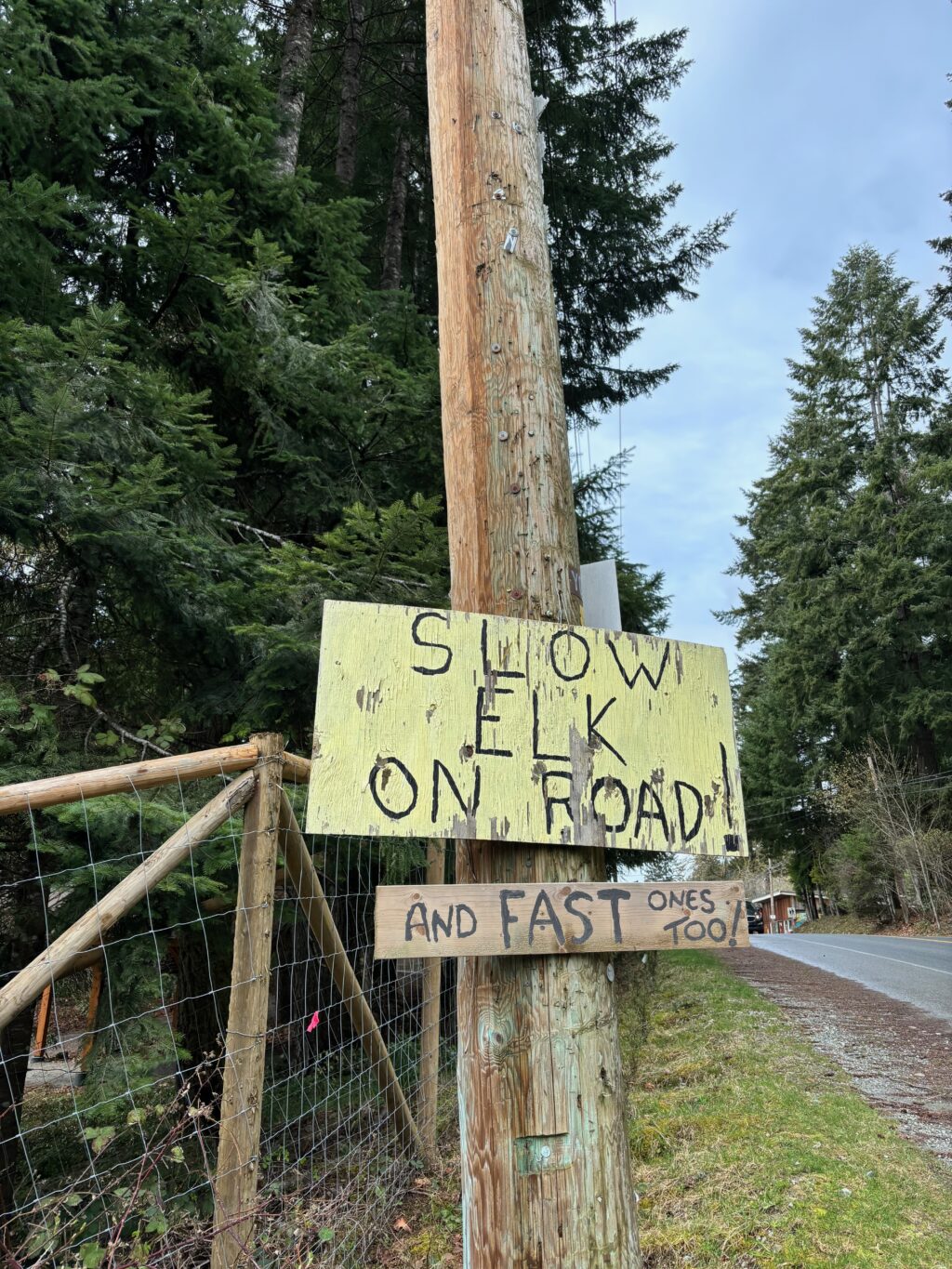
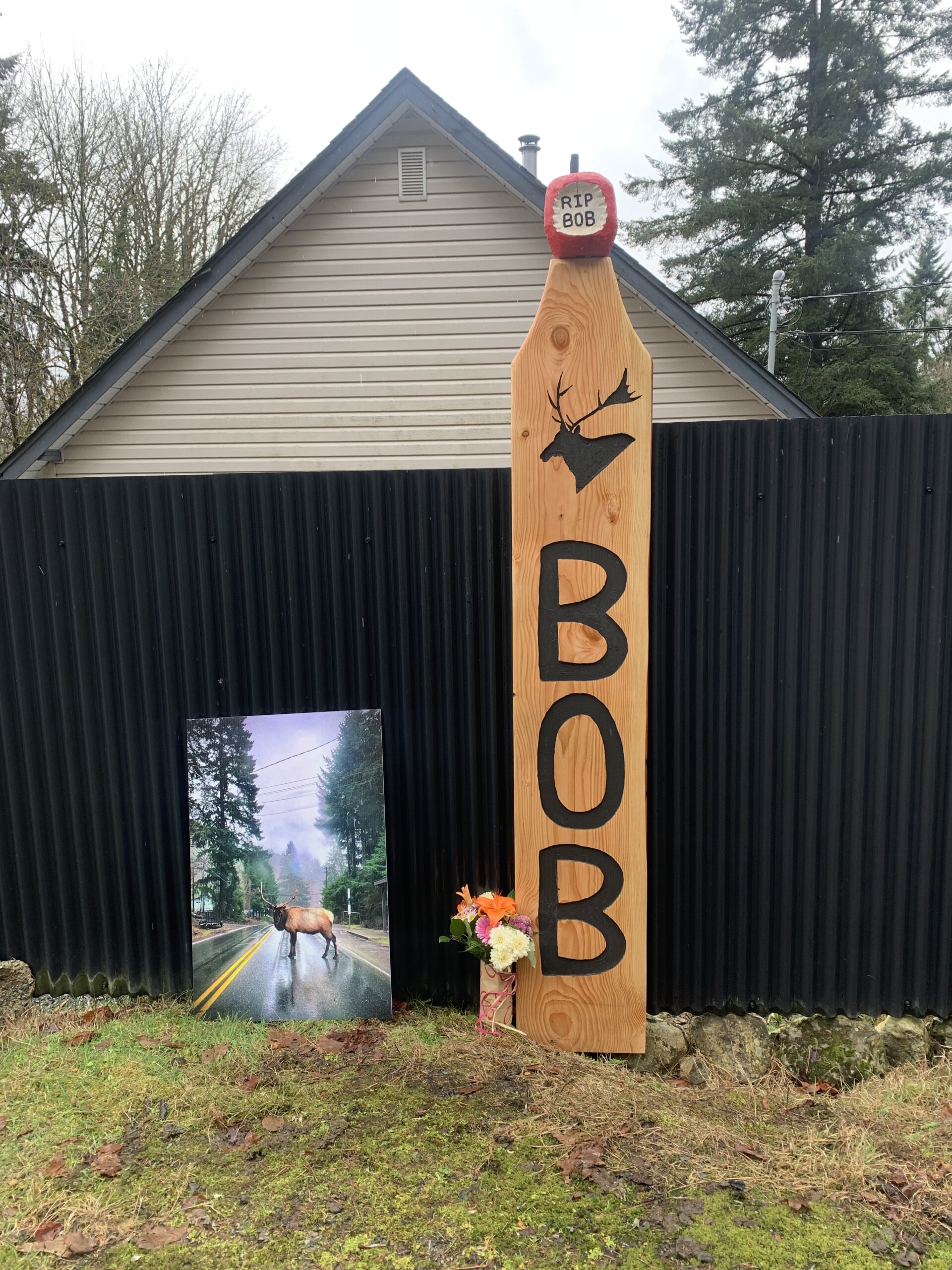
“Bob represents a significant loss not just to his herd, but to the human community that he lived in,” he added.
While Bob and his kin are regarded as a nuisance by some in Youbou who roll their eyes at elk being given names, there’s no ignoring the fact he captivated many people here. “I have never heard of a community having a memorial for an animal before,” Sielecki noted.
At the memorial, Baird revealed he knows the person who hit Bob. “[He’s had] the worst couple of weeks of his life,” Baird said.
“It really could have happened to any one of us,” he added. “I was very angry at first, wanting the person to be charged with speeding or whatever. But I realized soon that that’s just a stage of losing someone that you cared about. It was an accident, period.”
When humans and half-tonne foragers take up residence in the same place, you’re bound to have some conflicts. Just like elk love the fresh greenery in a clearcut, they are also drawn to gardens and the plants that pop up beside roadsides, especially in the spring. Grazing near a roadway poses a danger to humans and elk alike.
For instance, in 2014, there were an estimated 87 elk in the herd that lives around Highway 18, which runs between Duncan and Lake Cowichan. Since then, about a quarter of the estimated population has been reported killed on the highway, according to data obtained via a freedom of information request. The province’s wildlife-accident reporting system recorded 23 elk as killed on the 40 kilometres of highway between Duncan and Youbou between 2018 and 2022. But wildlife fatalities are seriously underestimated. A 2016 study prepared for the B.C. Ministry of Transportation and Infrastructure found 66 per cent of wildlife-vehicle collisions were not captured. That means the actual number of elk killed could be three times the number reported.
“Every large wild animal that dies on the highway is an animal that’s removed from that population of animals, it’s also removed from the First Nations food supply, it’s removed from subsistence hunters who are looking to put food on their table,” Sielecki said. (A small number of hunting licences for Roosevelt elk are awarded by lottery each year.)
In fall 2019, two crashes involving elk happened within 12 hours on Highway 18, prompting police to issue a reminder to watch for wildlife. In one, a woman was killed and two other people were seriously injured. A year before Bob was hit, Lake Cowichan Mayor Tim McGonigle vowed to meet with provincial officials “before another fatality occurs and families are affected by that.”
At issue is how to reduce collisions between vehicles and elk in the region. It’s a surprisingly thorny debate over the merits of signage, the efficacy of lower speed limits and the need for higher-tech options. Before I knew it, I found myself flung down a rabbit hole, talking to expert after expert in the field known as “road ecology.”
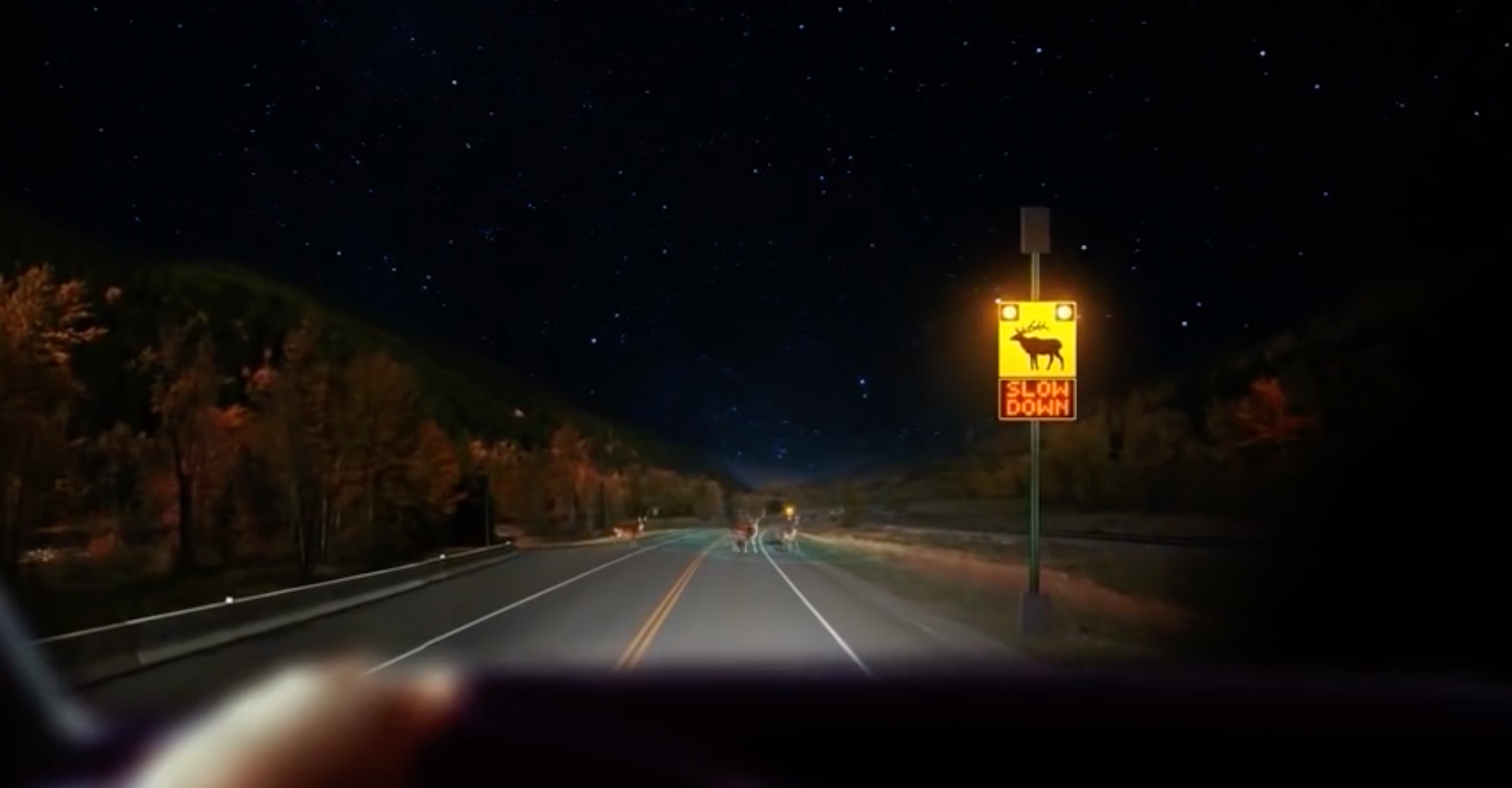
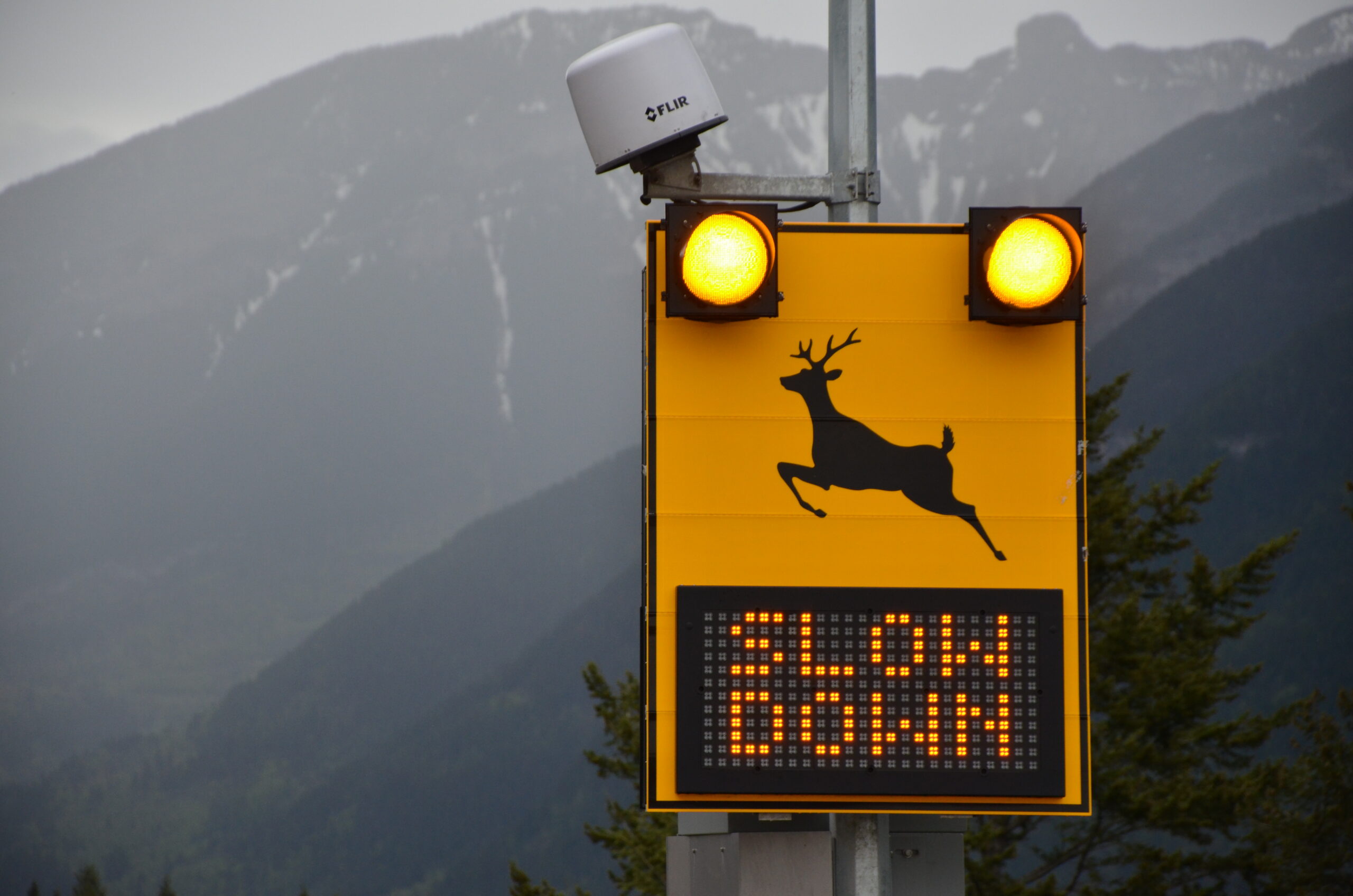
I connected with McGonigle the day after Bob was killed. He told me he has corresponded with the Ministry of Transportation and Infrastructure about elk collisions and is hoping to meet with the minister this year.
In September 2020, the ministry installed warning signs along Highway 18. These signs flash in low light conditions year-round and warn of elk for the next 20 kilometres. McGonigle said he gave the ministry a number of suggestions, including his conclusion the current signage is ineffective. “The more signs you have, the more you ignore them,” he said. “There’s no easy solution.”
He’d like to see an animal-detection system implemented — similar to those used on Highway 3 between Cranbrook, B.C., and Alberta. The systems use thermal imaging to tell drivers when wildlife is actually on the road, reducing the speed limit in real time.
Research backs McGonigle up. According to Marcel Huijser, a senior research ecologist at the Western Transportation Institute in Montana, the most effective option to reduce wildlife collisions is fencing with overpasses and underpasses. But if that’s not feasible, animal-detection systems can substantially reduce collisions.
“If the warning is very time specific and location specific, then we see a response in terms of what the drivers do,” Huijser said. Static wildlife warning signs, he added, “are absolutely not effective.”
Huijser’s research has found the average cost of a vehicle collision (based on vehicle repair costs, human injuries and human fatalities) is US$45,445 for an elk and US$82,646 for a moose.
The Ministry of Transportation and Infrastructure told me it set up cameras from September 2023 through January 2024 to count elk crossing Highway 18. Despite the fact dozens of elk have been killed on that stretch of highway over the last five years, the pilot “recorded no elk at either of the two monitored crossing locations.”
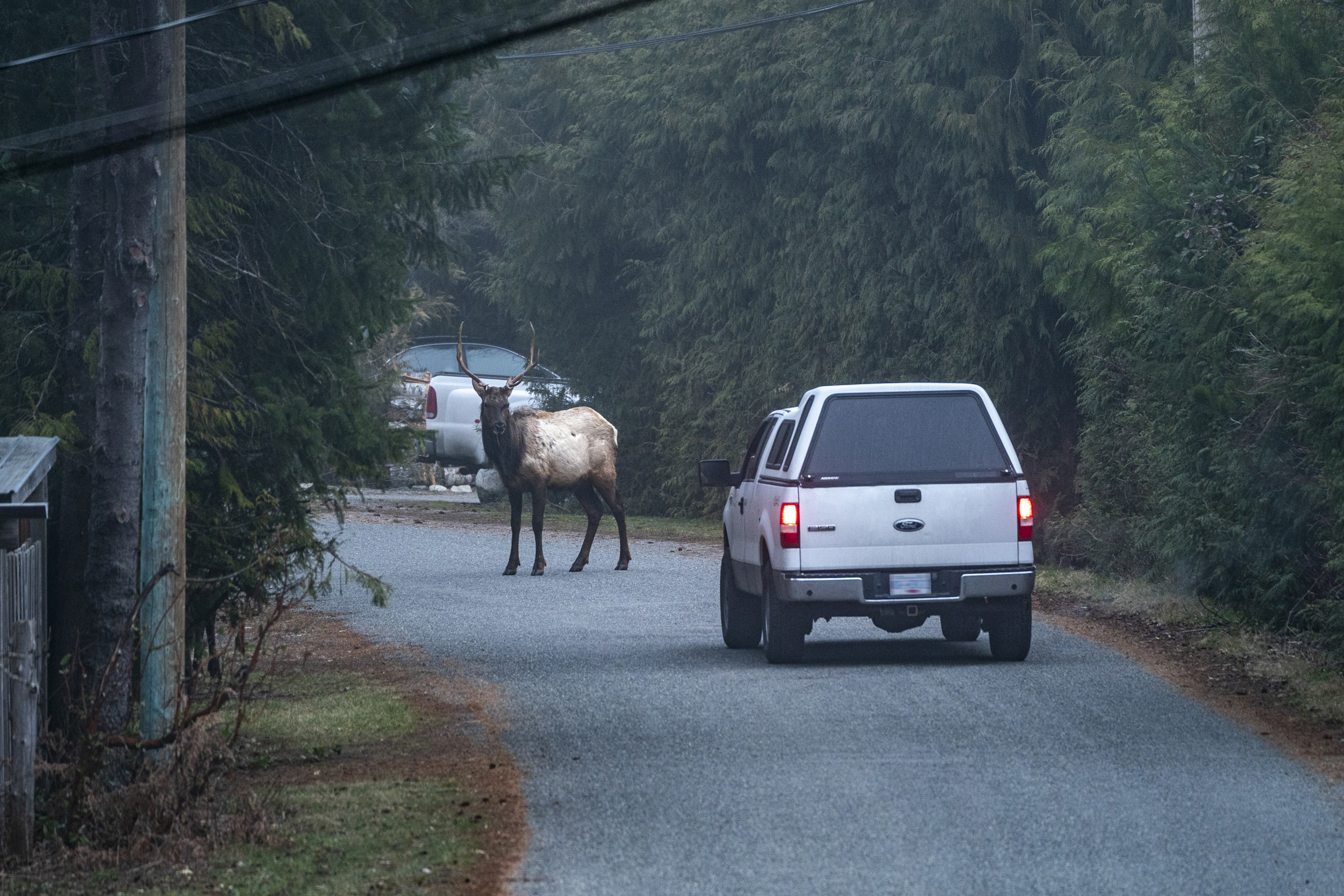
In a statement, the ministry said “after a thorough evaluation” it concluded that elk fencing would not provide “effective ecological protection” on Highway 18.
In the case of Bob’s demise, the RCMP ruled out alcohol and speed as factors in the crash. Huijser’s research has found only half of people travelling at 60 km/h in the dark can see a moose in time to come to a complete stop. Add in rain and fog and we can’t stop as fast as we think we can.
When I asked Huijser how fast a car needs to be moving to cause serious harm to an elk, he had a question for me: “What speed are you comfortable with being hit by a vehicle?”
After studying wildlife collisions for nearly 30 years, Huijser is frustrated with governments implementing ineffective measures.
“Driving in the dark in areas with large wild mammals is very similar to playing Russian roulette,” he said.
Too often, everyone loses.
A week after Bob’s memorial, I sat down with Stokes — Bob’s unofficial human guardian — at her dining room table. A set of Bob’s antlers that he shed in her yard hung above us. As her two rescue dogs buzzed around our feet, she told me she was still searching for Bob’s body. A few days later, she called me to say she’d found Bob’s body at a roadkill dump site, but his antlers had been cut off.
She said some people have blamed her for Bob’s death, due to her role in domesticating him. But others have dropped off flowers and condolence cards. She put a memorial up at her house, with photos and a wooden sign that reads: “R.I.P. Bob. You will be missed.” Another memorial 100 metres down the road marks the place Bob died and is a constant reminder to slow down.
Bob’s death has given Stokes — and many of us in Youbou — a chance to reflect on our relationship with wild animals.

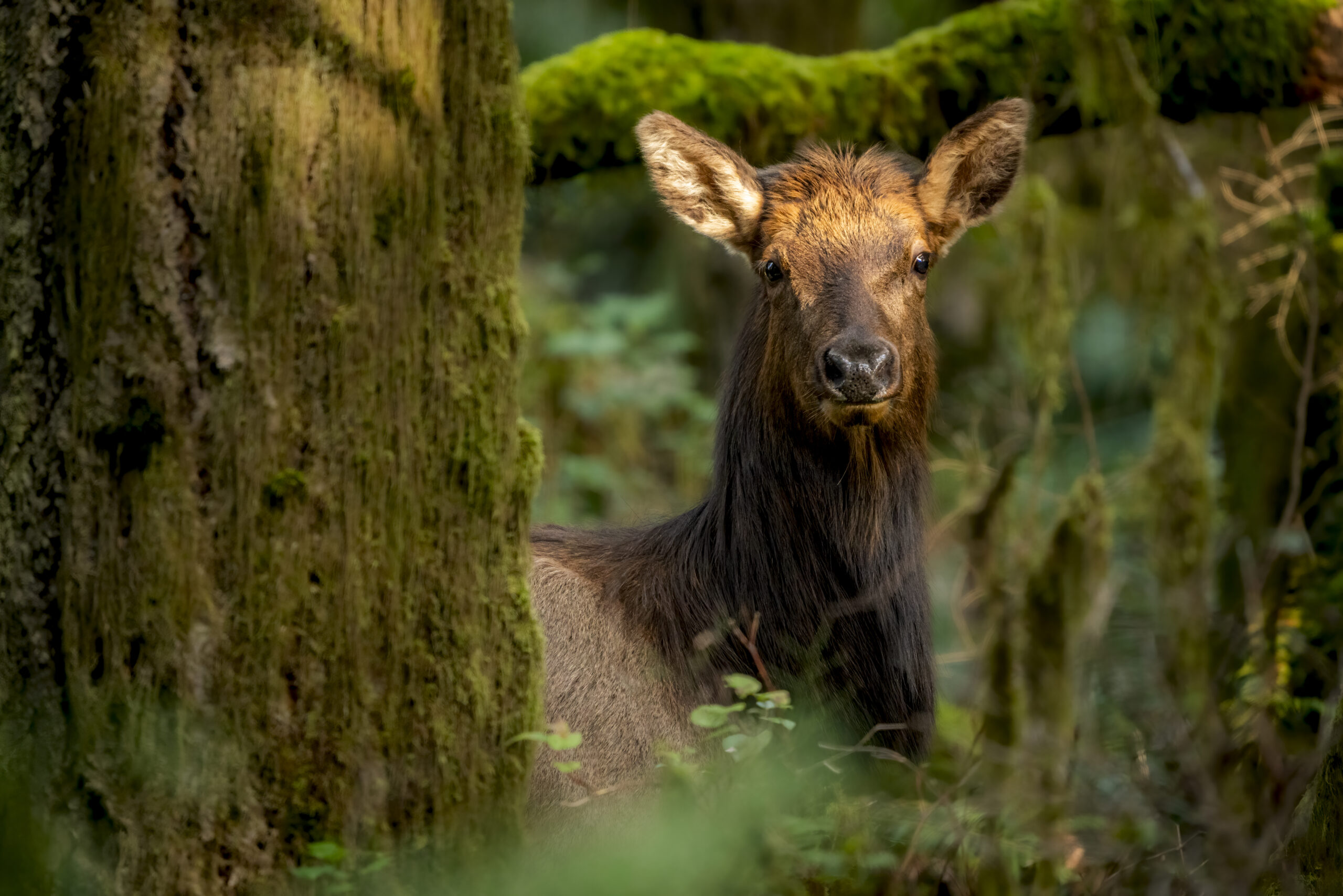
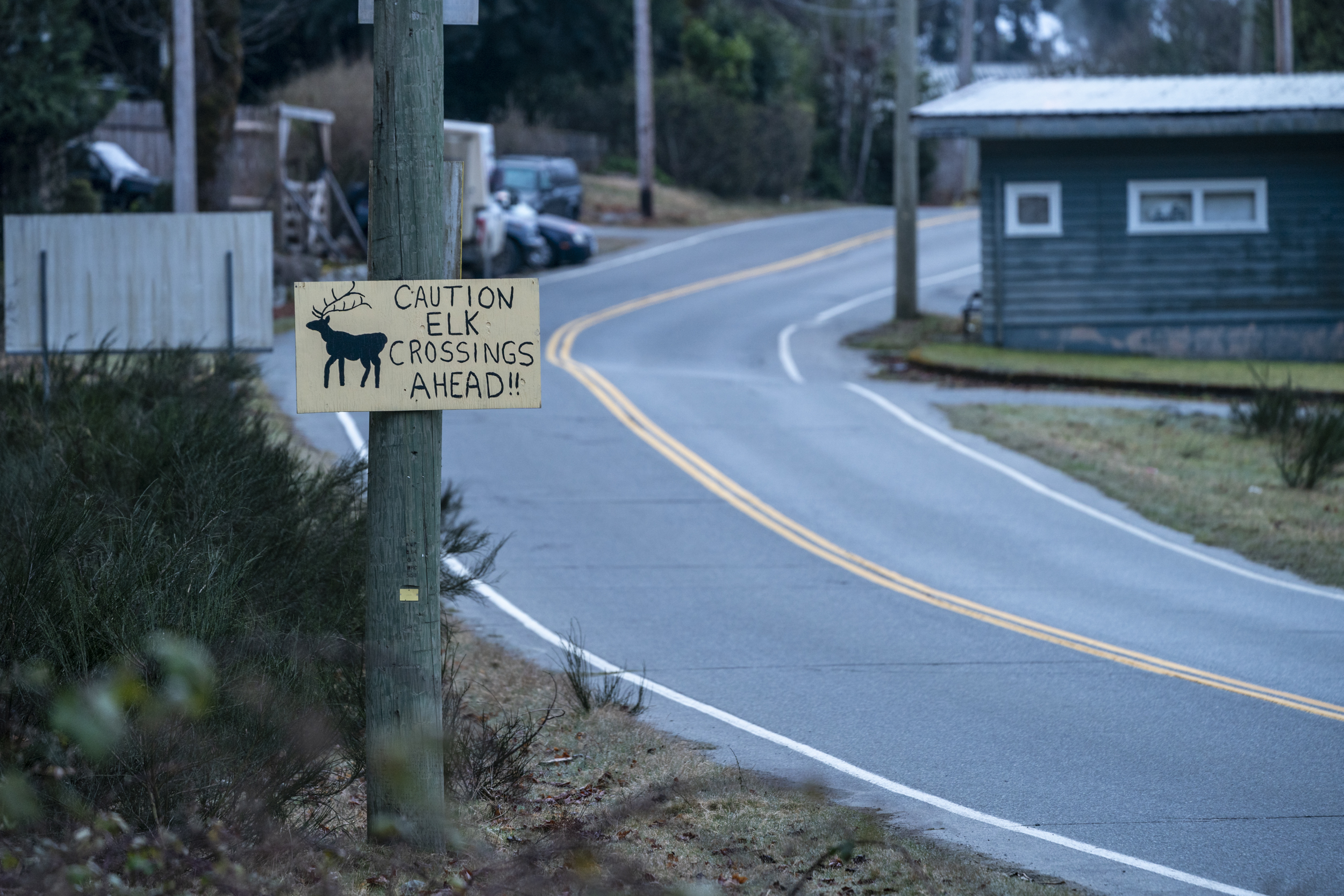
When Stokes spoke at Bob’s memorial, she didn’t mince words. “I fed Bob,” she said. “I’ve never kept it quiet.” While she’s sad not to see her constant companion any more, Stokes is crystal clear on one thing: “I’m never gonna feed another wild animal again.”
She went on to describe how feeding him led to her being a prisoner in her own home for years. “Bob knew the sound of my car, the locking mechanism. I’d get out of my car and he’s right there.” Getting in and out of her house became difficult. She couldn’t even walk across the street to the coffee shop.
A new proposed regulation could mean a fine for anyone caught feeding elk and deer in an urban setting on Vancouver Island. “Let’s keep them all skittish,” Stokes said. “If I see people [feeding elk], I will report them.”
For my part, after weeks of speaking to experts and locals trying to make sense of Bob’s death, I’ve started to come to peace with how the old guy left us. In the wild, an ailing elk would likely be killed by predators, and that’s not exactly a pleasant way to go either.
When I think back on my limited time knowing Bob, I feel wistful. Some days I like to believe the way he graced us with his presence on our first day in our home really was a good omen, but other days I know he was simply a habituated geriatric elk looking for food.
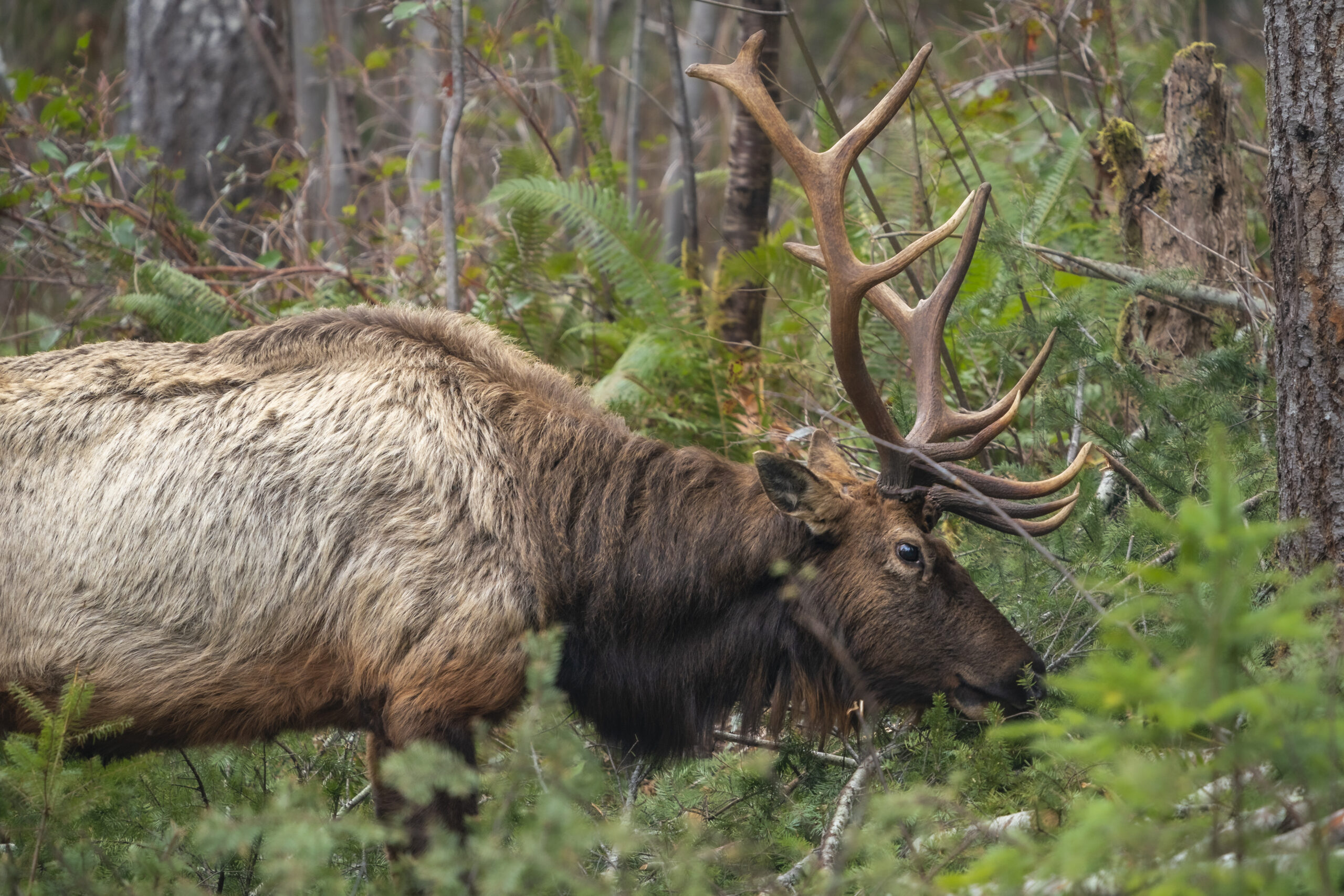
The very fact Roosevelt elk are a part of our communities on Vancouver Island is in itself a story of an animal brought back from the brink.
“It’s just worth remembering that there are success stories out there and that we need to learn from not just our mistakes, but from our successes,” Ford told me.
“Maybe Bob is both. Maybe what happened to Bob is an example of when we do things right. And an example of what we can learn from.”
In his life, Bob brought a sense of awe and wonder to many. His death has prompted a much-needed conversation about how humans and elk can share the same home. Many more elk will die on our roads this year. None will be as famous as Bob, but each one will be a life lost, and endanger human lives in the process.
— With files from Ainslie Cruickshank
Get the inside scoop on The Narwhal’s environment and climate reporting by signing up for our free newsletter. A $335 million funding commitment to fund...
Continue reading
First Nations are leading efforts to make sure lake sturgeon can find a home in...

We’re excited to share that an investigation by The Narwhal is a finalist for the...

A new documentary, Nechako: It Will Be a Big River Again, dives into how two...
